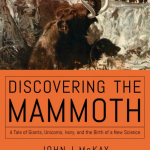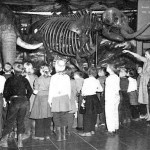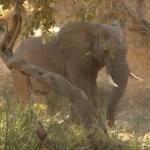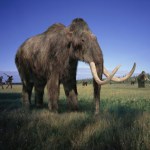mammoth
It wasn't a mammoth, it was a mastodon. But it was still a big hairy elephant featured at the climax-end of the main exhibit hall in the New York State museum. And it was an exhibit to end all exhibits. The New York State Museum, during its heyday, was world class, and the hall of evolution, which seemed old enough to have involved Darwin himself as a consultant, featured the reconstructed skeleton as well as a fur-covered version, of the creature discovered in a kettle only a few miles away. That exhibit, along with a dozen other spectacular exhibits that to my knowledge have not been…
Large hairy elephants got me into paleoanthropology, eventually.
Cohoes Mastodon Exhibit in old New York State Museum, Albany, NY.
I had a strong interest in science, and it was nurtured and expanded by my frequent visits to the New York State Museum, and there was never a doubt in anyone's mind, anywhere, that the coolest exhibit at that museum was the Cohoes Mastodon exhibit. Barbarians eventually came along and tore that exhibit down, along with all the other fantastic and traditional museum displays, when they made the new, slick, produced for consumption and not intense engagement…
Everyone knows that there are two kinds of elephants in this world: Asian and African. The Asian is the only one that can be trained and the African ones live in harmony with their environment until hunters come by and shoot them. Scratch a little deeper, and the African bush elephant lives by destroying its environment and moving on to new areas, where it destroys that environment, cycling back to the original region over generational time; Both African and Asian elephants can be trained; and there are three, not two species of elephant in this world: Asian, African Bush, and African…
The frozen tundra that covers a majority of Russia and northern Asia is a hard place to live. The average winter temperature is 30 below zero, and winter seems to last a lifetime. The short summer, which still gets only glancing rays of sun, barely breaks above freezing. It's so cold year round that part of the ground never defrosts. Without the flowing groundwater and rich sunlight of more southern climates, the tundra cannot support trees. That's its defining trait, really - "tundra" comes from the Finnish word tunturi, meaning treeless plain.
The dominant plant life, thus, are the grasses…
Well, in light of a mostly-sequenced mammoth genome, a lot of people are getting excited about the idea of cloning mammoths. ScienceBlogs.Com has dedicated their front "THE BUZZ IN THE BLOGOSPHERE" section today to it - and their "Reader Reaction" quote is from me (on a fellow blogger's post) - so go check out what other bloggers have been saying about all this!
In 1990, the late Michael Crichton published his most influential book. Sure, a lot of us loved 'State of Fear', but let's be honest - that's not his most popular book. If you haven't been under a rock through the '90s, you've probably heard of it - Jurassic Park. Of course, the series' portrayal of dinosaurs may have been a bit off (we now know the velociraptors had feathers, for example), but the idea was pure brilliance. Resurrecting animals from blood stored in preserved mosquitos - genius, and eventually, maybe even possible. This, the week of his death, scientists have published a few…
What? Is this a joke, Ethan? Have you been watching Jurassic Park again, drinking Dino DNA or something? No, I got an interesting question from startswithabang.com reader and ichthyophobe Lucas:
Over the years a few intact, frozen woolly mammoth have been found and procured by different scientists and governments, most recently Japan. What are they doing with these ancient popsicles? Cloning? Could a frozen woolly mammoth be effectively cloned?
Aaah, the woolly mammoth, something we think of as ancient, but really it only went extinct an estimated 3,700 years ago, with the last mammoths dying…



